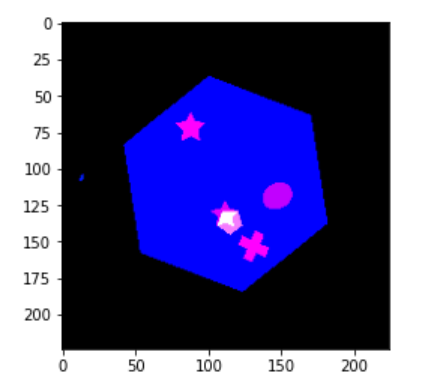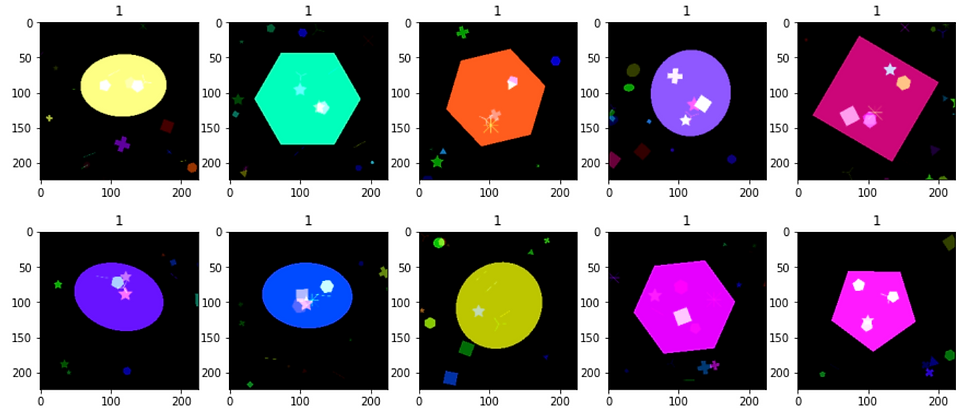MobileNet v2 Using PyTorch | Deep Learning Assignment Help
- realcode4you
- Jun 1, 2021
- 7 min read

Project Requirement:
Following are the details :
1. Download a subset of the Simple Concept DataBase (SCDB) dataset. 2. Train a MobileNet v2 on the dataset using PyTorch and report your best performance. 3. Take 5 samples from the test set and compute GradCAM, ScoreCAM and Occlusion Sensitivity maps for each. 4. Randomize the trained network’s weights up until (including) the fourth bottleneck layer (c=64) and compute saliency maps for the same 5 samples again. 5. Briefly present your results in a short report.
Code Script
Load Dataset
import os
import zipfile
local_zip = '/content/data.zip'
zip_ref = zipfile.ZipFile(local_zip, 'r')
zip_ref.extractall('/tem')Import Libraries
#let's import all the libraries:
# all pytorch libraries
import torch
import torchvision as tv
from torchvision import datasets, transforms
from torch import optim
import torch.nn as nn
import torch.nn.functional as F
from torch.utils.data import Subset
# all necessary libraris
import numpy as np
import pandas as pd
import os
import matplotlib.pyplot as plt
import seaborn as sns
import shutil
from PIL import Image
from sklearn.metrics import f1_score, confusion_matrix
from sklearn.model_selection import train_test_split# Checkwhich device you're using
device = torch.device("cuda:0" if torch.cuda.is_available() else "cpu:0")
print(device)data_dir = '/tem/data/TrainImages'
augmentations = [transforms.Resize((224,224)),
transforms.RandomHorizontalFlip(),
transforms.ToTensor(),
transforms.Normalize(mean=[0.485, 0.456, 0.406],
std=[0.229, 0.224, 0.225])]
dataset = datasets.ImageFolder(data_dir, transform=transforms.Compose(augmentations))
print(len(dataset))
def train_val_dataset(dataset, val_split=0.10):
train_idx, val_idx = train_test_split(list(range(len(dataset))), test_size=val_split)
my_dataset = {}
my_dataset['train'] = Subset(dataset, train_idx)
my_dataset['val'] = Subset(dataset, val_idx)
return my_dataset
my_dataset = train_val_dataset(dataset)
print(len(my_dataset['train']))
print(len(my_dataset['val']))
# The original dataset is available in the Subset class
print(my_dataset['train'].dataset)
Output:
960 864 96 Dataset ImageFolder Number of datapoints: 960 Root location: /tem/data/TrainImages StandardTransform Transform: Compose( Resize(size=(224, 224), interpolation=bilinear) RandomHorizontalFlip(p=0.5) ToTensor() Normalize(mean=[0.485, 0.456, 0.406], std=[0.229, 0.224, 0.225]) )
BATCH_SIZE = 64
dataloaders = {x: torch.utils.data.DataLoader(my_dataset[x], batch_size=BATCH_SIZE, shuffle=True, num_workers=1) for x in ['train', 'val']}classes = list(my_dataset['train'].dataset.class_to_idx.keys())
dataiter = iter(dataloaders['train'])
dataset_sizes = {x: len(my_dataset[x]) for x in ['train', 'val']}
images, labels = dataiter.next()
print(images.shape)
print(labels.shape)
Output:
torch.Size([64, 3, 224, 224]) torch.Size([64])
classes,dataset_sizesOutput:
(['0', '1'], {'train': 864, 'val': 96})
dataloadersOutput:
{'train': <torch.utils.data.dataloader.DataLoader at 0x7fe6e0051750>, 'val': <torch.utils.data.dataloader.DataLoader at 0x7fe6e0051cd0>}
#images has 32 images from our train dataloader
images[31] , labels[31]Output:
(tensor([[[-2.1179, -2.1179, -2.1179, ..., -2.1179, -2.1179, -2.1179], [-2.1179, -2.1179, -2.1179, ..., -2.1179, -2.1179, -2.1179], [-2.1179, -2.1179, -2.1179, ..., -2.1179, -2.1179, -2.1179], ..., [-2.1179, -2.1179, -2.1179, ..., -2.1179, -2.1179, -2.1179], [-2.1179, -2.1179, -2.1179, ..., -2.1179, -2.1179, -2.1179], [-2.1179, -2.1179, -2.1179, ..., -2.1179, -2.1179, -2.1179]], [[-2.0357, -2.0357, -2.0357, ..., -2.0357, -2.0357, -2.0357], [-2.0357, -2.0357, -2.0357, ..., -2.0357, -2.0357, -2.0357], [-2.0357, -2.0357, -2.0357, ..., -2.0357, -2.0357, -2.0357], ..., [-2.0357, -2.0357, -2.0357, ..., -2.0357, -2.0357, -2.0357], [-2.0357, -2.0357, -2.0357, ..., -2.0357, -2.0357, -2.0357], [-2.0357, -2.0357, -2.0357, ..., -2.0357, -2.0357, -2.0357]], [[-1.8044, -1.8044, -1.8044, ..., -1.8044, -1.8044, -1.8044], [-1.8044, -1.8044, -1.8044, ..., -1.8044, -1.8044, -1.8044], [-1.8044, -1.8044, -1.8044, ..., -1.8044, -1.8044, -1.8044], ..., [-1.8044, -1.8044, -1.8044, ..., -1.8044, -1.8044, -1.8044], [-1.8044, -1.8044, -1.8044, ..., -1.8044, -1.8044, -1.8044], [-1.8044, -1.8044, -1.8044, ..., -1.8044, -1.8044, -1.8044]]]), tensor(0))
tnsn_np = images[31].numpy()
plt.imshow(np.transpose(tnsn_np,(1,2,0)))Output:

def img_display(img):
img = img / 2 + 0.5 # unnormalize
npimg = img.numpy()
npimg = np.transpose(npimg, (1, 2, 0))
return npimg
classes = {0: '0', 1: '1'}
# Viewing data examples used for training
fig, axis = plt.subplots(3, 5, figsize=(15, 10))
for i, ax in enumerate(axis.flat):
with torch.no_grad():
image, label = images[i], labels[i]
ax.imshow(img_display(image))
ax.set(title ="{}".format(classes[label.item()]))Output:

Checking Image shape:
images.shapeOutput:
torch.Size([64, 3, 224, 224])
Fit Mobile Net V2 Model
import torch
model_ft = torch.hub.load('pytorch/vision:v0.9.0', 'mobilenet_v2', pretrained=True)
Result after run:
HBox(children=(FloatProgress(value=0.0, max=14212972.0), HTML(value='')))
Check model:
model_ftOutput:
MobileNetV2( (features): Sequential( (0): ConvBNActivation( (0): Conv2d(3, 32, kernel_size=(3, 3), stride=(2, 2), padding=(1, 1), bias=False) (1): BatchNorm2d(32, eps=1e-05, momentum=0.1, affine=True, track_running_stats=True) (2): ReLU6(inplace=True) ) (1): InvertedResidual( (conv): Sequential( (0): ConvBNActivation( (0): Conv2d(32, 32, kernel_size=(3, 3), stride=(1, 1), padding=(1, 1), groups=32, bias=False) (1): BatchNorm2d(32, eps=1e-05, momentum=0.1, affine=True, track_running_stats=True) (2): ReLU6(inplace=True) ) (1): Conv2d(32, 16, kernel_size=(1, 1), stride=(1, 1), bias=False) (2): BatchNorm2d(16, eps=1e-05, momentum=0.1, affine=True, track_running_stats=True) ) ) (2): InvertedResidual( (conv): Sequential( (0): ConvBNActivation( (0): Conv2d(16, 96, kernel_size=(1, 1), stride=(1, 1), bias=False) (1): BatchNorm2d(96, eps=1e-05, momentum=0.1, affine=True, track_running_stats=True) (2): ReLU6(inplace=True) ) (1): ConvBNActivation( (0): Conv2d(96, 96, kernel_size=(3, 3), stride=(2, 2), padding=(1, 1), groups=96, bias=False) (1): BatchNorm2d(96, eps=1e-05, momentum=0.1, affine=True, track_running_stats=True) (2): ReLU6(inplace=True) ) (2): Conv2d(96, 24, kernel_size=(1, 1), stride=(1, 1), bias=False) (3): BatchNorm2d(24, eps=1e-05, momentum=0.1, affine=True, track_running_stats=True) ) ) (3): InvertedResidual( (conv): Sequential( (0): ConvBNActivation( (0): Conv2d(24, 144, kernel_size=(1, 1), stride=(1, 1), bias=False) (1): BatchNorm2d(144, eps=1e-05, momentum=0.1, affine=True, track_running_stats=True) (2): ReLU6(inplace=True) ) (1): ConvBNActivation( (0): Conv2d(144, 144, kernel_size=(3, 3), stride=(1, 1), padding=(1, 1), groups=144, bias=False) (1): BatchNorm2d(144, eps=1e-05, momentum=0.1, affine=True, track_running_stats=True) (2): ReLU6(inplace=True) ) (2): Conv2d(144, 24, kernel_size=(1, 1), stride=(1, 1), bias=False) (3): BatchNorm2d(24, eps=1e-05, momentum=0.1, affine=True, track_running_stats=True) ) ) (4): InvertedResidual( (conv): Sequential( (0): ConvBNActivation( (0): Conv2d(24, 144, kernel_size=(1, 1), stride=(1, 1), bias=False) (1): BatchNorm2d(144, eps=1e-05, momentum=0.1, affine=True, track_running_stats=True) (2): ReLU6(inplace=True) ) (1): ConvBNActivation( (0): Conv2d(144, 144, kernel_size=(3, 3), stride=(2, 2), padding=(1, 1), groups=144, bias=False) (1): BatchNorm2d(144, eps=1e-05, momentum=0.1, affine=True, track_running_stats=True) (2): ReLU6(inplace=True) ) (2): Conv2d(144, 32, kernel_size=(1, 1), stride=(1, 1), bias=False) (3): BatchNorm2d(32, eps=1e-05, momentum=0.1, affine=True, track_running_stats=True) ) ) (5): InvertedResidual( (conv): Sequential( (0): ConvBNActivation( (0): Conv2d(32, 192, kernel_size=(1, 1), stride=(1, 1), bias=False) (1): BatchNorm2d(192, eps=1e-05, momentum=0.1, affine=True, track_running_stats=True) (2): ReLU6(inplace=True) ) (1): ConvBNActivation( (0): Conv2d(192, 192, kernel_size=(3, 3), stride=(1, 1), padding=(1, 1), groups=192, bias=False) (1): BatchNorm2d(192, eps=1e-05, momentum=0.1, affine=True, track_running_stats=True) (2): ReLU6(inplace=True) ) (2): Conv2d(192, 32, kernel_size=(1, 1), stride=(1, 1), bias=False) (3): BatchNorm2d(32, eps=1e-05, momentum=0.1, affine=True, track_running_stats=True) ) ) (6): InvertedResidual( (conv): Sequential( (0): ConvBNActivation( (0): Conv2d(32, 192, kernel_size=(1, 1), stride=(1, 1), bias=False) (1): BatchNorm2d(192, eps=1e-05, momentum=0.1, affine=True, track_running_stats=True) (2): ReLU6(inplace=True) ) (1): ConvBNActivation( (0): Conv2d(192, 192, kernel_size=(3, 3), stride=(1, 1), padding=(1, 1), groups=192, bias=False) (1): BatchNorm2d(192, eps=1e-05, momentum=0.1, affine=True, track_running_stats=True) (2): ReLU6(inplace=True) ) (2): Conv2d(192, 32, kernel_size=(1, 1), stride=(1, 1), bias=False) (3): BatchNorm2d(32, eps=1e-05, momentum=0.1, affine=True, track_running_stats=True) ) ) (7): InvertedResidual( (conv): Sequential( (0): ConvBNActivation( (0): Conv2d(32, 192, kernel_size=(1, 1), stride=(1, 1), bias=False) (1): BatchNorm2d(192, eps=1e-05, momentum=0.1, affine=True, track_running_stats=True) (2): ReLU6(inplace=True) ) (1): ConvBNActivation( (0): Conv2d(192, 192, kernel_size=(3, 3), stride=(2, 2), padding=(1, 1), groups=192, bias=False) (1): BatchNorm2d(192, eps=1e-05, momentum=0.1, affine=True, track_running_stats=True) (2): ReLU6(inplace=True) ) (2): Conv2d(192, 64, kernel_size=(1, 1), stride=(1, 1), bias=False) (3): BatchNorm2d(64, eps=1e-05, momentum=0.1, affine=True, track_running_stats=True) ) ) (8): InvertedResidual( (conv): Sequential( (0): ConvBNActivation( (0): Conv2d(64, 384, kernel_size=(1, 1), stride=(1, 1), bias=False) (1): BatchNorm2d(384, eps=1e-05, momentum=0.1, affine=True, track_running_stats=True) (2): ReLU6(inplace=True) ) (1): ConvBNActivation( (0): Conv2d(384, 384, kernel_size=(3, 3), stride=(1, 1), padding=(1, 1), groups=384, bias=False) (1): BatchNorm2d(384, eps=1e-05, momentum=0.1, affine=True, track_running_stats=True) (2): ReLU6(inplace=True) ) (2): Conv2d(384, 64, kernel_size=(1, 1), stride=(1, 1), bias=False) (3): BatchNorm2d(64, eps=1e-05, momentum=0.1, affine=True, track_running_stats=True) ) ) (9): InvertedResidual( (conv): Sequential( (0): ConvBNActivation( (0): Conv2d(64, 384, kernel_size=(1, 1), stride=(1, 1), bias=False) (1): BatchNorm2d(384, eps=1e-05, momentum=0.1, affine=True, track_running_stats=True) (2): ReLU6(inplace=True) ) (1): ConvBNActivation( (0): Conv2d(384, 384, kernel_size=(3, 3), stride=(1, 1), padding=(1, 1), groups=384, bias=False) (1): BatchNorm2d(384, eps=1e-05, momentum=0.1, affine=True, track_running_stats=True) (2): ReLU6(inplace=True) ) (2): Conv2d(384, 64, kernel_size=(1, 1), stride=(1, 1), bias=False) (3): BatchNorm2d(64, eps=1e-05, momentum=0.1, affine=True, track_running_stats=True) ) ) (10): InvertedResidual( (conv): Sequential( (0): ConvBNActivation( (0): Conv2d(64, 384, kernel_size=(1, 1), stride=(1, 1), bias=False) (1): BatchNorm2d(384, eps=1e-05, momentum=0.1, affine=True, track_running_stats=True) (2): ReLU6(inplace=True) ) (1): ConvBNActivation( (0): Conv2d(384, 384, kernel_size=(3, 3), stride=(1, 1), padding=(1, 1), groups=384, bias=False) (1): BatchNorm2d(384, eps=1e-05, momentum=0.1, affine=True, track_running_stats=True) (2): ReLU6(inplace=True) ) (2): Conv2d(384, 64, kernel_size=(1, 1), stride=(1, 1), bias=False) (3): BatchNorm2d(64, eps=1e-05, momentum=0.1, affine=True, track_running_stats=True) ) ) (11): InvertedResidual( (conv): Sequential( (0): ConvBNActivation( (0): Conv2d(64, 384, kernel_size=(1, 1), stride=(1, 1), bias=False) (1): BatchNorm2d(384, eps=1e-05, momentum=0.1, affine=True, track_running_stats=True) (2): ReLU6(inplace=True) ) (1): ConvBNActivation( (0): Conv2d(384, 384, kernel_size=(3, 3), stride=(1, 1), padding=(1, 1), groups=384, bias=False) (1): BatchNorm2d(384, eps=1e-05, momentum=0.1, affine=True, track_running_stats=True) (2): ReLU6(inplace=True) ) (2): Conv2d(384, 96, kernel_size=(1, 1), stride=(1, 1), bias=False) (3): BatchNorm2d(96, eps=1e-05, momentum=0.1, affine=True, track_running_stats=True) ) ) (12): InvertedResidual( (conv): Sequential( (0): ConvBNActivation( (0): Conv2d(96, 576, kernel_size=(1, 1), stride=(1, 1), bias=False) (1): BatchNorm2d(576, eps=1e-05, momentum=0.1, affine=True, track_running_stats=True) (2): ReLU6(inplace=True) ) (1): ConvBNActivation( (0): Conv2d(576, 576, kernel_size=(3, 3), stride=(1, 1), padding=(1, 1), groups=576, bias=False) (1): BatchNorm2d(576, eps=1e-05, momentum=0.1, affine=True, track_running_stats=True) (2): ReLU6(inplace=True) ) (2): Conv2d(576, 96, kernel_size=(1, 1), stride=(1, 1), bias=False) (3): BatchNorm2d(96, eps=1e-05, momentum=0.1, affine=True, track_running_stats=True) ) ) (13): InvertedResidual( (conv): Sequential( (0): ConvBNActivation( (0): Conv2d(96, 576, kernel_size=(1, 1), stride=(1, 1), bias=False) (1): BatchNorm2d(576, eps=1e-05, momentum=0.1, affine=True, track_running_stats=True) (2): ReLU6(inplace=True) ) (1): ConvBNActivation( (0): Conv2d(576, 576, kernel_size=(3, 3), stride=(1, 1), padding=(1, 1), groups=576, bias=False) (1): BatchNorm2d(576, eps=1e-05, momentum=0.1, affine=True, track_running_stats=True) (2): ReLU6(inplace=True) ) (2): Conv2d(576, 96, kernel_size=(1, 1), stride=(1, 1), bias=False) (3): BatchNorm2d(96, eps=1e-05, momentum=0.1, affine=True, track_running_stats=True) ) ) (14): InvertedResidual( (conv): Sequential( (0): ConvBNActivation( (0): Conv2d(96, 576, kernel_size=(1, 1), stride=(1, 1), bias=False) (1): BatchNorm2d(576, eps=1e-05, momentum=0.1, affine=True, track_running_stats=True) (2): ReLU6(inplace=True) ) (1): ConvBNActivation( (0): Conv2d(576, 576, kernel_size=(3, 3), stride=(2, 2), padding=(1, 1), groups=576, bias=False) (1): BatchNorm2d(576, eps=1e-05, momentum=0.1, affine=True, track_running_stats=True) (2): ReLU6(inplace=True) ) (2): Conv2d(576, 160, kernel_size=(1, 1), stride=(1, 1), bias=False) (3): BatchNorm2d(160, eps=1e-05, momentum=0.1, affine=True, track_running_stats=True) ) ) (15): InvertedResidual( (conv): Sequential( (0): ConvBNActivation( (0): Conv2d(160, 960, kernel_size=(1, 1), stride=(1, 1), bias=False) (1): BatchNorm2d(960, eps=1e-05, momentum=0.1, affine=True, track_running_stats=True) (2): ReLU6(inplace=True) ) (1): ConvBNActivation( (0): Conv2d(960, 960, kernel_size=(3, 3), stride=(1, 1), padding=(1, 1), groups=960, bias=False) (1): BatchNorm2d(960, eps=1e-05, momentum=0.1, affine=True, track_running_stats=True) (2): ReLU6(inplace=True) ) (2): Conv2d(960, 160, kernel_size=(1, 1), stride=(1, 1), bias=False) (3): BatchNorm2d(160, eps=1e-05, momentum=0.1, affine=True, track_running_stats=True) ) ) (16): InvertedResidual( (conv): Sequential( (0): ConvBNActivation( (0): Conv2d(160, 960, kernel_size=(1, 1), stride=(1, 1), bias=False) (1): BatchNorm2d(960, eps=1e-05, momentum=0.1, affine=True, track_running_stats=True) (2): ReLU6(inplace=True) ) (1): ConvBNActivation( (0): Conv2d(960, 960, kernel_size=(3, 3), stride=(1, 1), padding=(1, 1), groups=960, bias=False) (1): BatchNorm2d(960, eps=1e-05, momentum=0.1, affine=True, track_running_stats=True) (2): ReLU6(inplace=True) ) (2): Conv2d(960, 160, kernel_size=(1, 1), stride=(1, 1), bias=False) (3): BatchNorm2d(160, eps=1e-05, momentum=0.1, affine=True, track_running_stats=True) ) ) (17): InvertedResidual( (conv): Sequential( (0): ConvBNActivation( (0): Conv2d(160, 960, kernel_size=(1, 1), stride=(1, 1), bias=False) (1): BatchNorm2d(960, eps=1e-05, momentum=0.1, affine=True, track_running_stats=True) (2): ReLU6(inplace=True) ) (1): ConvBNActivation( (0): Conv2d(960, 960, kernel_size=(3, 3), stride=(1, 1), padding=(1, 1), groups=960, bias=False) (1): BatchNorm2d(960, eps=1e-05, momentum=0.1, affine=True, track_running_stats=True) (2): ReLU6(inplace=True) ) (2): Conv2d(960, 320, kernel_size=(1, 1), stride=(1, 1), bias=False) (3): BatchNorm2d(320, eps=1e-05, momentum=0.1, affine=True, track_running_stats=True) ) ) (18): ConvBNActivation( (0): Conv2d(320, 1280, kernel_size=(1, 1), stride=(1, 1), bias=False) (1): BatchNorm2d(1280, eps=1e-05, momentum=0.1, affine=True, track_running_stats=True) (2): ReLU6(inplace=True) ) ) (classifier): Sequential( (0): Dropout(p=0.2, inplace=False) (1): Linear(in_features=1280, out_features=1000, bias=True) ) )
Check the features:
print("model_ft")
for i, param in enumerate(model_ft.named_parameters()):
pass
print(i, param[0], param[1].requires_grad)
# param.requires_grad = False
Output:
model_ft 0 features.0.0.weight True 1 features.0.1.weight True 2 features.0.1.bias True 3 features.1.conv.0.0.weight True 4 features.1.conv.0.1.weight True 5 features.1.conv.0.1.bias True 6 features.1.conv.1.weight True 7 features.1.conv.2.weight True 8 features.1.conv.2.bias True 9 features.2.conv.0.0.weight True 10 features.2.conv.0.1.weight True 11 features.2.conv.0.1.bias True 12 features.2.conv.1.0.weight True 13 features.2.conv.1.1.weight True 14 features.2.conv.1.1.bias True 15 features.2.conv.2.weight True 16 features.2.conv.3.weight True 17 features.2.conv.3.bias True 18 features.3.conv.0.0.weight True 19 features.3.conv.0.1.weight True 20 features.3.conv.0.1.bias True 21 features.3.conv.1.0.weight True 22 features.3.conv.1.1.weight True 23 features.3.conv.1.1.bias True 24 features.3.conv.2.weight True 25 features.3.conv.3.weight True 26 features.3.conv.3.bias True 27 features.4.conv.0.0.weight True
-------
If you need complete solution of this problem then send your request at below contact details and get instant help soon with an affordable price.
At realcode4you you can get help in different machine learning project assignment related to;
Computer Vision
Natural language Processing
Data Visualization In Machine Learning
And More other
Send your request to get instant help:
realcode4you@gmail.com



Comments